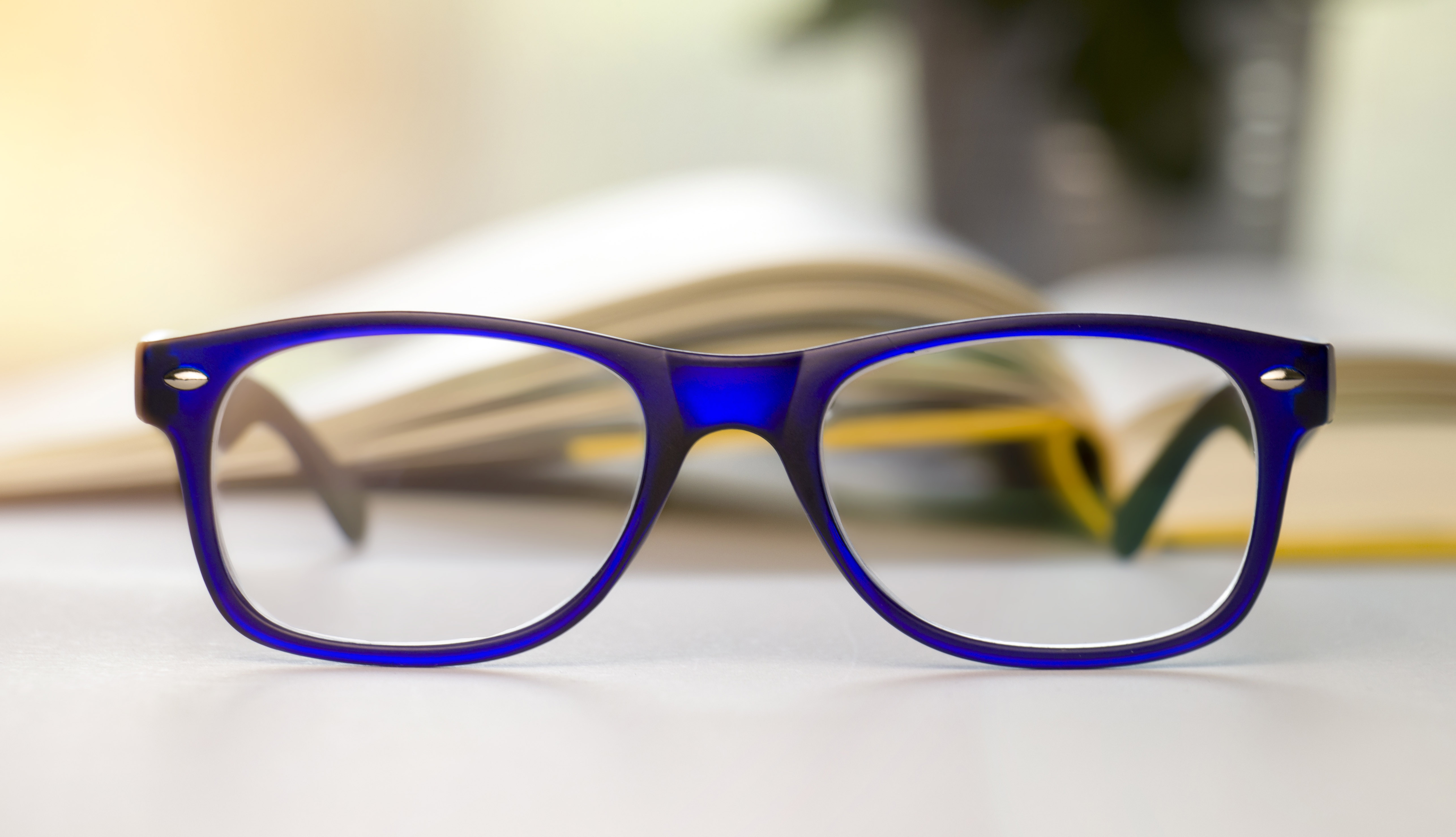Blog
The Best Glasses for Reading and Close-Up Work
As we age or spend more time on close-up tasks, many of us find ourselves struggling to read fine print or focus on detailed work. The right pair of glasses can make a significant difference in comfort and clarity when it comes to reading and close-up work. This comprehensive guide will explore the best types of glasses for these activities, including prescription options, lens types, and helpful features to consider.
Understanding Vision Changes in Close-Up Work
Before diving into the best glasses for reading, it’s important to understand why our vision changes and how it affects our ability to read and focus on close-up tasks.

1. Presbyopia
One of the most common conditions affecting reading vision is presbyopia, a natural part of aging that typically begins in the early to mid-40s. It occurs when the eye’s lens loses elasticity, making it difficult to focus on nearby objects. Symptoms include:
- Difficulty reading small text
- Eye strain or fatigue when doing close work
- Headaches after prolonged reading
2. Digital Eye Strain
With the increasing use of digital devices, many people experience digital eye strain, also known as computer vision syndrome. Symptoms can include:
- Blurred vision
- Dry eyes
- Headaches
- Difficulty focusing
3. Importance of Corrective Lenses
Proper corrective lenses can alleviate the discomfort associated with these conditions, allowing for clearer vision and reducing eye strain during reading and close-up tasks.
Types of Glasses for Reading and Close-Up Work
When selecting glasses for reading, various options are available, each designed to cater to different visual needs and preferences. Here are some of the most effective types:
1. Reading Glasses
What They Are:
Reading glasses are specifically designed to help individuals focus on close-up tasks. They come in various strengths, measured in diopters, which indicate the lens power needed to correct vision.
Benefits:
- Convenience: Reading glasses are easy to carry and can be used as a quick solution for reading or close-up work.
- Affordability: They are often less expensive than prescription lenses and can be purchased over the counter.
Choosing the Right Strength:
To determine the appropriate strength for reading glasses, consider the following:
- Visit an Eye Care Professional: An eye exam can help identify the correct prescription based on your vision needs.
- Try Different Strengths: If purchasing over the counter, start with weaker magnifications and gradually increase strength until you find the most comfortable option.
2. Progressive Lenses
What They Are:
Progressive lenses are multifocal lenses that provide a smooth transition between different vision zones, allowing you to see clearly at various distances—from reading to intermediate and distance vision.
Benefits:
- Versatility: Ideal for those who need multiple prescriptions in one pair of glasses, making them perfect for reading and other tasks without switching glasses.
- Natural Vision: They mimic the natural vision changes that occur as we age, providing a seamless visual experience.
Considerations:
- Adjustment Period: It may take some time to adjust to progressive lenses, as the transition zones can feel different from single-vision lenses.
- Proper Fitting: Ensure that the lenses are correctly fitted to your frame and aligned with your eyes to maximize comfort and clarity.
3. Bifocal Lenses

What They Are:
Bifocal lenses contain two distinct optical powers, typically used for distance vision on the top portion and reading on the bottom.
Benefits:
- Clear Vision: They provide a dedicated area for reading, making it easy to switch between distance and close-up tasks.
- Ease of Use: Bifocals are effective for those who don’t want to wear multiple pairs of glasses.
Considerations:
- Visible Line: The distinct line between the two lens powers may not appeal to everyone, as it can be noticeable.
- Limited Intermediate Vision: Bifocals do not provide a smooth transition for intermediate distances, which can be a limitation for some users.
4. Computer Glasses
What They Are:
Computer glasses are designed specifically for screen use and can help reduce digital eye strain by optimizing your vision for the distance between your eyes and the screen.
Benefits:
- Blue Light Filtering: Many computer glasses come with blue light filtering technology, reducing glare and preventing eye strain caused by prolonged screen time.
- Comfortable Viewing: They often feature an anti-reflective coating to minimize glare from screens and overhead lighting.
Considerations:
- Custom Prescription: If you spend long hours at a computer, consider getting a custom prescription that accounts for your specific working distance.
- Lens Types: You can choose from single-vision or progressive lenses based on your needs.
5. Task-Specific Glasses
What They Are:
Task-specific glasses are designed for particular activities, such as crafting, sewing, or other hobbies requiring close-up focus.
Benefits:
- Tailored Vision: These glasses can be customized for the exact distance of your work, providing optimal clarity and comfort.
- Enhanced Detail: Many task-specific glasses are equipped with specialized coatings to reduce glare and enhance color contrast.
Lens Coatings to Enhance Reading Glasses
In addition to the lens type, specific coatings can enhance the functionality of your reading glasses. Here are some popular options to consider:
1. Anti-Reflective Coating
What It Is:
Anti-reflective (AR) coating reduces glare from screens and overhead lighting, improving clarity and comfort.
Benefits:
- Enhanced Clarity: AR coating allows more light to pass through the lens, providing clearer vision.
- Reduced Eye Strain: By minimizing glare, AR coatings can help decrease eye fatigue during prolonged reading or screen time.
2. Blue Light Filtering
What It Is:
Blue light filtering coatings reduce exposure to blue light emitted by digital screens, which can contribute to digital eye strain.
Benefits:
- Less Eye Fatigue: These coatings help alleviate discomfort associated with long hours in front of screens.
- Improved Sleep Quality: By reducing blue light exposure, these coatings can help regulate your sleep cycle, promoting better rest.
3. Scratch-Resistant Coating
What It Is:
Scratch-resistant coatings protect the lenses from everyday wear and tear, keeping them clearer for longer.
Benefits:
- Durability: This coating helps prevent scratches, ensuring that your lenses remain clear and functional.
- Ease of Maintenance: Scratch-resistant lenses are easier to keep clean and maintain.
Choosing the Right Frame for Reading Glasses
The frame you choose for your reading glasses can greatly impact comfort and functionality. Here are some factors to consider:
1. Frame Material
- Plastic Frames: Lightweight and often less expensive, plastic frames can be comfortable for prolonged wear but may not be as durable as metal frames.
- Metal Frames: Typically more durable and adjustable, metal frames can provide a more sophisticated appearance but may be heavier.
2. Frame Style
- Full-Rim Frames: Provide the most support and are suitable for various lens types.
- Semi-Rimless Frames: Offer a lighter look and are often more comfortable but may limit lens options.
- Reading Glasses with Spring Hinges: These frames flex outward, providing additional comfort, especially for extended wear.
3. Fit and Comfort
- Proper Fitting: Ensure that the glasses fit well and do not slide down your nose or pinch your temples.
- Lightweight Options: Consider frames made from lightweight materials, especially if you plan to wear them for long periods.
Tips for Maintaining Your Reading Glasses
To ensure your reading glasses provide optimal performance and longevity, follow these maintenance tips:
1. Clean Regularly
Use a microfiber cloth and an appropriate lens cleaner to clean your glasses regularly. Avoid using paper towels or clothing, as these can scratch the lenses.
2. Store Properly
When not in use, store your glasses in a protective case to prevent scratches and damage. Avoid leaving them in hot or humid environments, which can warp the frames.
3. Handle with Care
Be gentle when handling your glasses. Avoid bending the frames or applying excessive force, which can compromise the lenses and coatings.
4. Schedule Regular Eye Exams
Regular eye exams are essential for maintaining your vision health. Your eye care professional can monitor changes in your vision and update your prescription as needed.
Conclusion
Finding the best glasses for reading and close-up work is essential for maintaining comfort and clarity. Whether you opt for reading glasses, progressive lenses, or computer glasses, understanding your specific needs and preferences is key.
Consider factors such as lens type, coatings, frame material, and fit when selecting your eyewear. With the right pair of glasses, you can alleviate eye strain, enhance your reading experience, and enjoy your hobbies without discomfort.
Investing in quality glasses tailored to your visual needs will not only improve your reading and close-up work but also contribute to your overall eye health and well-being. Embrace the journey of finding the perfect pair, and enjoy clearer vision and greater comfort in all your close-up tasks!


